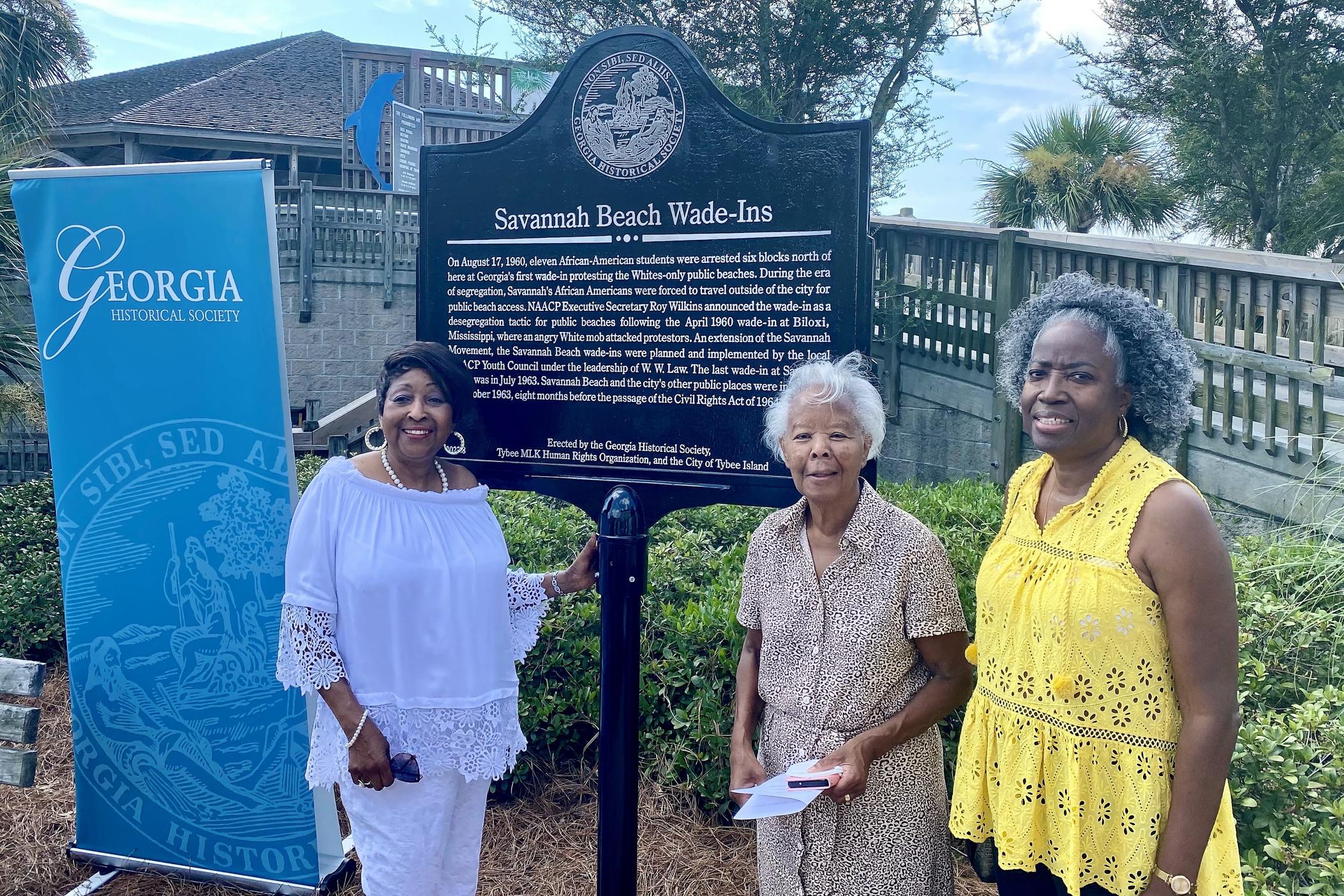Section Branding
Header Content
From ‘whites only’ to Georgia's largest public beach: New marker honors ‘Wade-Ins’ on Tybee Island
Primary Content
LISTEN: The Savannah Beach Wade-Ins of the early 1960s are now memorialized near the Tybee Island pier. GPB's Benjamin Payne reports.
———
Beach-goers on coastal Georgia's Tybee Island may notice something new. But it took years to get there — 62 years, to be exact.
“This is part of the civil rights trail,” said Georgia State Rep. Edna Jackson, speaking in front of a large group of people assembled at the beach. “For we shall never forget what happened here on the seashores of Tybee Island.”
Today, Tybee is home to Georgia's largest public beach, drawing in people from all walks of life. But back in the early 1960s, it was called Savannah Beach. And it wasn't really a public beach: It was “whites only.”
That didn't sit well with Jackson. So, she took a stand — or, rather, a swim.
“We did it because it was the right thing to do,” Jackson recalled, referring to what came to be known as the Savannah Beach Wade-Ins: From 1960 to 1963, hundreds of young African Americans braved the whites-only waters, in an act of resistance against segregationist Jim Crow laws.
Many were arrested, starting with the 11 students who participated in the inaugural wade-in on Aug. 17, 1960. Sixty-two years later to the day, the Georgia Historical Society unveiled a new historical marker at the base of the Tybee beach pier, meant to commemorate the waders.
Among them was Evalena Hoskins, who was on hand to witness the marker's unveiling.
“Just to think that we're around long enough to see it and everything that we came out here for has taken place,” said Hoskins, 78, when asked what the marker — paid for by an anonymous donor — means to her.
Desegregation, of course, didn't happen overnight: According to the Georgia Historical Society, Savannah Beach and Tybee Island's other public places were integrated by October 1963, with the last wade-in occurring in July 1963.
For Hoskins, Jackson, and their fellow student activists, that meant three years of resistance — three years of wading in, putting their safety on the line and swimming against the tide of Jim Crow so that one day, all might be able to swim safely.
“Anyone can come out here and enjoy themselves and be a part of Tybee or whatever they like to do,” Hoskins said.
Mary Gray was also at the marker's unveiling. Although she didn't participate in the wade-ins, Gray was a part of other acts of occupational resistance in the Savannah area. That included a kneel-in at a whites-only hotel, for which she spent three days in jail.
“We were put in a little, small cell — maybe about the size of your bathroom,” Gray recalled. “And it was about 10 of us in that cell. And it was so hot that they later transferred us [to] the county jail in a big room. We were sleeping on a mat on the floor.”
Gray was just 19 years old at the time.
“And when they let us out [after] those three days, we were let out at night for us to have no other transportation," she said. "We didn't have no cellphone back then in those days. So, we had to walk home at night when they let us out of jail. But then things have changed. Thank God for it.”
These acts of resistance — which collectively came to be known as the Savannah Movement — were organized by students in the Savannah branch of the NAACP under the leadership of W.W. Law. The organization's current president, Chadrick Mance, spoke at the unveiling.
“Those students could see through the generations to where we are now and where we will be,” Mance said. “When they took a step in those unknown waters, they weren't stepping for themselves. They were stepping for freedom, for justice, for equality, for prosperity and for patriotism.”
The students' activism did not go unnoticed by Martin Luther King Jr.: According to the Georgia Historical Society, in 1964 King declared Savannah to be the most desegregated city south of the Mason-Dixon Line.
“Those students, in an ironic way, were not really students,” Mance said. “They were teachers. They proved that ordinary people — driven by something bigger than themselves — could do extraordinary things.”


